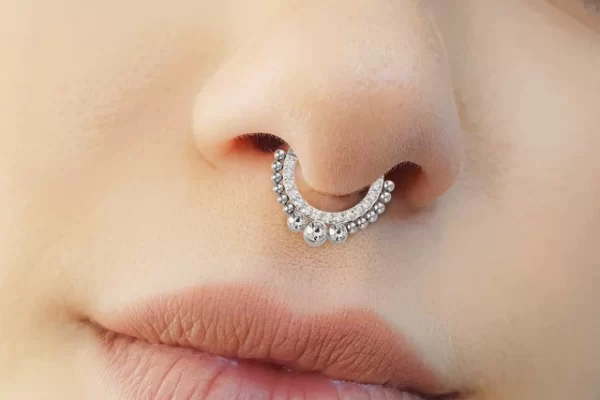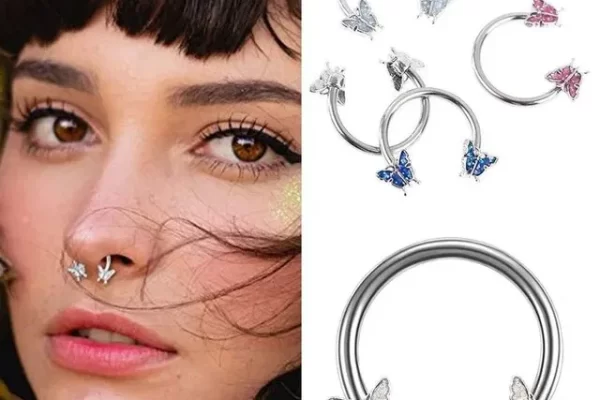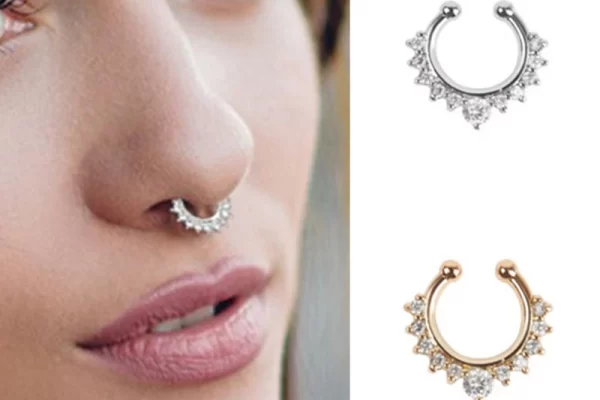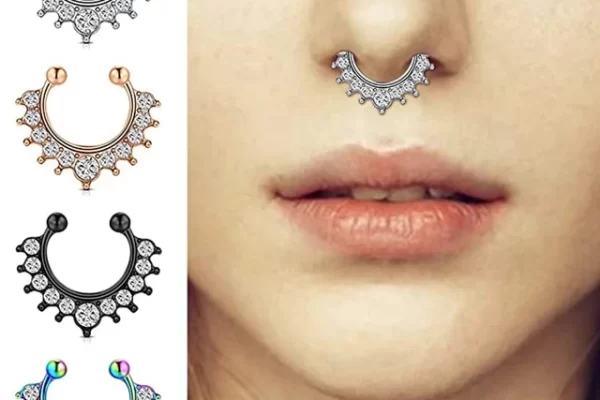Septum Piercing in Madrid
Septum piercing, often referred to as piercing through the nasal septum (the partition between the two nostrils), is a form of body modification that is deeply rooted in both history and modern culture. This unique piercing has a rich cultural significance that spans different eras and cultures, and has become a popular trend in the fashion and piercing community in recent years. In this article we will explore in detail the history, process, care, variations and social acceptance of the Septum Piercing.
Historical background of the Septum Piercing
Septum Piercing is by no means a modern invention. It has a long history dating back to indigenous peoples and ancient civilisations, such as the Mayans, Aztecs, Incas and some tribes of New Guinea. In these cultures, the Septum Piercing symbolised power, status, masculinity and bravery. Warriors and chiefs often wore bones, ivory or other materials as jewellery in their piercings to instil respect and fear.
The septum piercing process Septum Piercing
Piercing a Septum Piercing requires skill and precision. It is usually pierced through the thin piece of skin at the bottom of the nasal septum, known as the “sweet spot”, and not through the cartilaginous part. A professional piercer uses a sterile needle to pierce the septum and then inserts the chosen jewellery. Choosing the right piercer, who is experienced in septum piercing and knows the anatomy of the nose, is essential for safe performance and healing.
Septum Piercing healing and care
The healing time for a Septum Piercing can vary from 6 to 8 weeks, depending on the individual’s healing speed and care. Proper aftercare is crucial to avoid infection and other complications. This includes regularly cleaning the piercing with a saline solution or aftercare spray and avoiding unnecessary touching or twisting of the jewellery. It is also advisable not to smoke or drink alcohol during the healing phase, as this can delay healing.
Septum Piercing Jewellery Variations and Style
The variety of jewellery available for septum piercings is large and offers individual expression options. From discreet and minimalist rings to striking and decorative clickers, horseshoes and barbells: the offer is varied. The materials range from surgical steel and titanium to gold and biocompatible plastics, which are also suitable for allergy sufferers.
Social Acceptance and Cultural Significance of Septum Piercing
Although Septum Piercing has traditional roots in many cultures, for a long time it was considered a marginal phenomenon in Western society. In recent years, however, this has changed significantly. Septum Piercing has gained popularity and is now worn by people from all walks of life as a fashion and personal statement. This shift reflects a wider trend towards acceptance of body modifications in general.
Possible risks of Septum Piercing
As with any piercing, there are potential risks, such as infection, improper placement and healing problems. Proper care, choosing an experienced piercer and good hygiene are crucial to minimising these risks.
Conclusion
Septum piercing is more than just a form of body art: it is a cultural symbol deeply rooted in history that modern society has adopted as an expression of personal identity and style. With proper care and an understanding of the meaning and process behind it, a Septum Piercing can be an enriching and aesthetically pleasing experience.
If you would like to get a Septum Piercing in Madrid, visit our Piercing Lounge.
**Image source – Aliexpress









